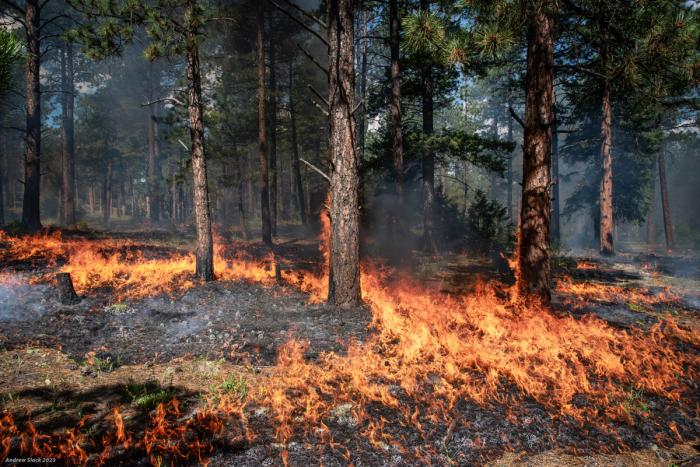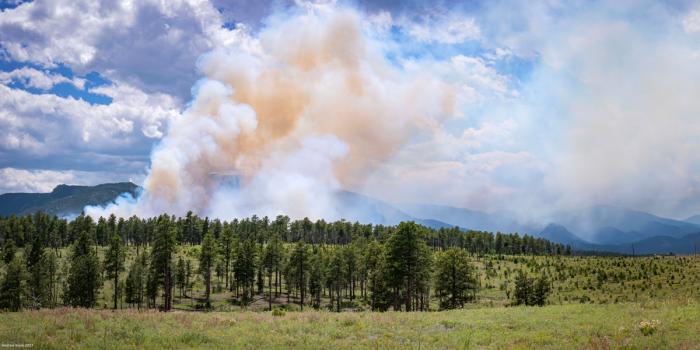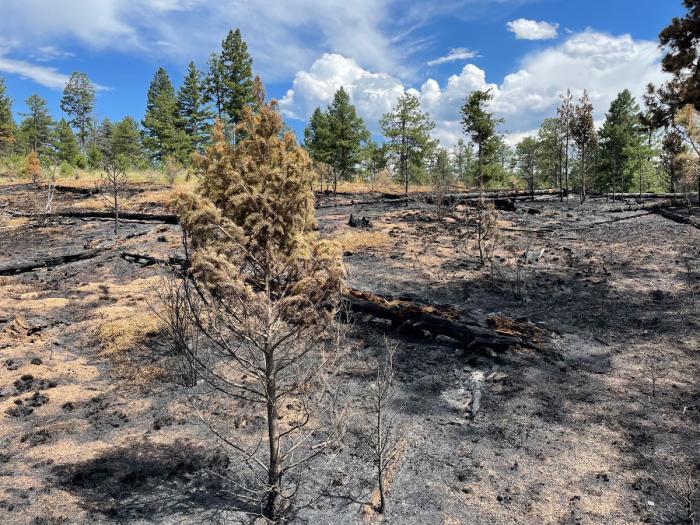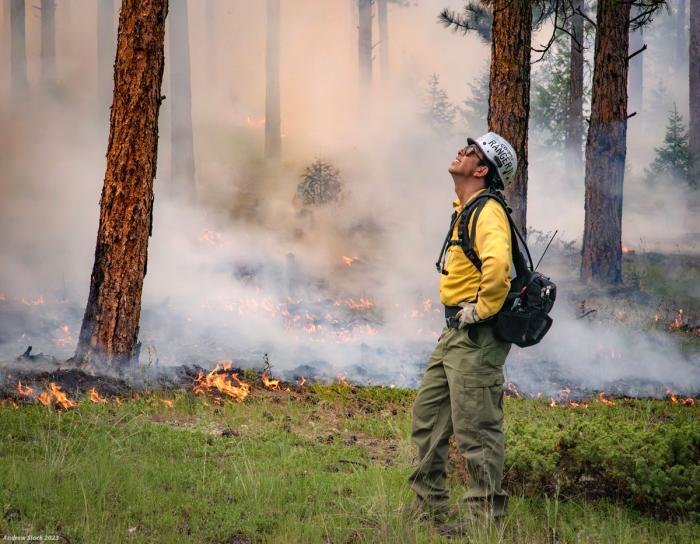Improving forest health with fire
Hikers and bikers along a popular stretch of the Colorado Trail near the town of Buffalo Creek in Jefferson County will get a taste of forest management as they make their way through the trees.
This summer, the U.S. Forest service conducted two prescribed burns in the Pike National Forest near the Little Scraggy parking lot, burning a total of 250 acres of forest land.
The two burns, which occurred June 28 and July 12, followed prescribed burns conducted in 2021 on 200 acres in the same area, all part of a large, multi-year effort to protect the health of the national forest and watershed.
In the wake of the prescribed burns, visitors will see charred, blackened earth where the forest floor was intentionally burned. Some of the pine trees have scorch marks on the trunks which is expected and not a threat to the trees.
Prescribed fires are rare in the summer, but due to this year’s wet spring weather, the Forest Service was able to find the right conditions to successfully do the burns.
To conduct a burn, firefighters walk through the forest and set small fires with drip torches. The goal of the prescribed fires is to burn unwanted “fuels” in the forest. Fuels is the term used to describe downed branches, small trees, twigs, pinecones and pine needles that can feed a fire if ignited by lightning or humans.
“The main goal is to reduce the risk of large, catastrophic fires that can destroy homes, wildlife habitat, trails and create long-term damage to watersheds,” said James Pilsmaker, assistant fire management officer for the South Platte Ranger District of the Pike and San Isabel National Forest. “Prescribed fires also reduce tree density and help rejuvenate the soil to spur new growth in the forest.”
During this summer’s burns, the intentionally set and monitored flames stayed low to the ground, only reaching 2-5 feet high. Pilsmaker said the ponderosa pine and Douglas-fir trees ended up with some burns on their bark, but they are very resilient to low-intensity fires.
“Over time, the fuels can pile up on the forest floor and really create a hazardous situation,” Pilsmaker said. “By removing the fuels, we’re reducing the threat of catastrophic fires.”
While the stretch of Colorado Trail through the burn area looks unsightly now, Pilsmaker expects new grasses will grow back next spring.
“The Buffalo Creek area was ravaged by a massive fire back in 1996,” Pilsmaker said. “Hopefully with these small prescribed fires and other mitigation efforts, we won’t see a repeat.”
Help from D.C. and From Forests to Faucets
Denver Water helped fund the project through its involvement in the From Forests to Faucets partnership with the U.S. Forest Service, the Colorado State Forest Service, the Natural Resources Conservation Service and the Colorado Forest Restoration Institute of Colorado State University.
From Forests to Faucets began in response to the costly impacts of the 1996 Buffalo Creek and the 2002 Hayman wildfires. The two fires destroyed 150,000 acres in Denver Water’s South Platte River watershed.
As of July 2023, the partners have invested nearly $96 million on forest management projects since the partnership’s began in 2010 through work planned into 2027. So far, more than 120,000 acres of forests have been treated in areas where Denver Water collects water, with nearly two-thirds of that within the South Platte River Basin. An additional 1.4 million new trees have been planted in areas ravaged by wildfires.
“Our water supply starts in the forests as rain and snow so it’s critically important to have healthy forests,” said Madelene McDonald, watershed scientist at Denver Water.
Meet Denver Water scientist Madelene McDonald, and learn about her role on a Congressional commission to reduce wildfire threats to water, land and people.
The 2023 prescribed burns also received funding from the federal government’s recently passed Bipartisan Infrastructure Law and the Inflation Reduction Act. The U.S. Forest Service is working to conduct more prescribed burns through its Wildfire Crisis Strategy, which aims to speed up the process of forest health projects across the country.
“Funding from the federal government is critical in keeping these projects going to protect the forests that deliver water to 1.5 million people in the Denver metro area,” McDonald said. “We’re very thankful for the support from Washington, D.C.”
After the fire
Firefighters monitored the fire in the days and weeks following the burn to ensure the fire did not spread past the designated boundaries.
The Colorado Forest Restoration Institute was on hand to document the burn and quantify outcomes. The data is shared among various forest stakeholders to track the long-term results of the burn and provide continued guidance for future forest health treatments.





